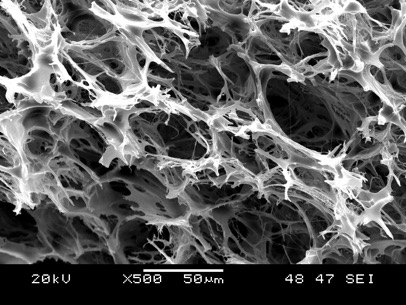
March 23, 2016 — Population growth, climate change and environmental degradation are intensifying pressures on global water supplies, hastening the need for innovations that will improve access to clean water for drinking, food production and sanitation.
Researchers at U of T Engineering are leading the development of new technologies to improve water conservation, purification and reclamation both in Canada and around the world. The Institute for Water Innovation (IWI), which will be part of the Centre for Engineering Innovation & Entrepreneurship when it opens in summer 2017, unites the expertise of more than a dozen engineering professors across multiple disciplines to tackle this key global challenge.
Here are three examples of innovative solutions engineered by IWI researchers:
Oil-absorbing sponge
Tailings ponds from oil sands mining operations in Alberta contain enough liquid to fill 390,000 Olympic-sized swimming pools. Much of that liquid still has small amounts of oil in it. But because the oil is emulsified — tiny droplets of it are suspended in water — it takes decades for it to either settle to the bottom of the pond or float to the surface where it can be skimmed off.
Pavani Cherukupally (MIE PhD Candidate), along with her supervisors, mechanical engineering Professors Amy Bilton and Chul Park, is testing a polymer foam that was originally designed to absorb sound vibrations to see if it can soak up the oil. “Oil droplets tend to have an electric charge on them, and it happens that this foam surface has a complementary charge,” says Bilton. “The pores have an appropriate size too — small enough to provide lots of surface area, but large enough to have a good uptake rate.”
By understanding exactly how the foam absorbs oil while excluding water, the team hopes to be able to design foams that absorb oil even more effectively. When the foam is “full,” the oil can be squeezed out and the foam re-used. The idea is to use these foams to filter the oil droplets from the tailings water as it is produced, without waiting years for it to sink or float. “In the future we could even design these foams to be made of biodegradable polymers to further reduce the environmental impact,” says Park.
Using foams to clean water in enormous tailings ponds could make a big difference to the landscape of the oil sands region. “This is potentially an environmentally friendly alternative to some of the methods currently used to treat that oil sands process water,” says Bilton.